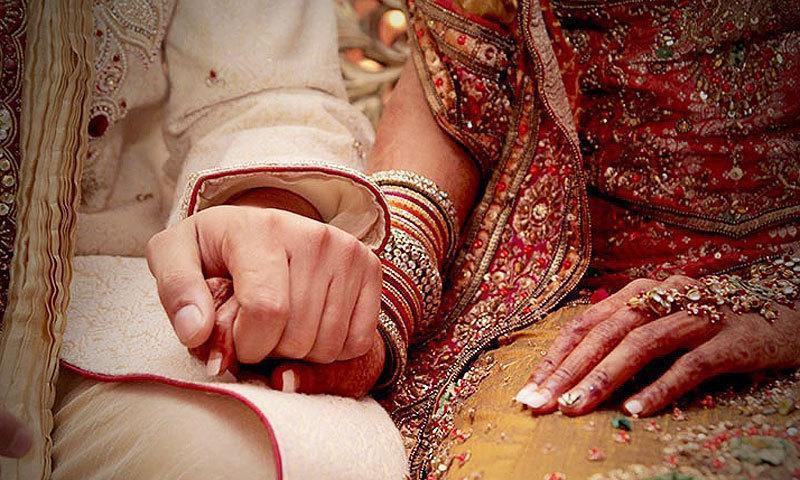
Welcome to the enchanting world of Pakistani Sindhi weddings, where age-old traditions and customs come alive to celebrate love and union. Sindhi weddings, deeply rooted in the cultural heritage of the Sindhi community, are a tapestry of vibrant rituals and joyous celebrations. Every element of a Sindhi wedding is rich with symbolism and significance, from the sharing of a sweet called “Misri” that stands for harmony to the extravagant Mehndi ceremony, the revered Sanhh ritual, the ornamental ornamentation, and the sacred Nikah rite. In this blog, we will delve into the intricacies of these cherished traditions, exploring the beauty and symbolism behind each step and highlighting the unique elements that make Pakistani Sindhi weddings an extraordinary affair.
The Sweet Harmony of Misri:
The bride and groom’s families exchange a unique treat called “Misri” in the name of harmony and unity. This crystallized sugar symbolizes the sweetness and peace the couple wishes to cultivate in their marriage. The exchange of Misri represents the acceptance, blessings, and well wishes for a blissful and harmonious union.
The Mehndi Extravaganza:
The Mehndi ceremony is a vibrant and colourful celebration that sets the stage for the wedding festivities. Intricate henna designs are applied to the hands and feet of the bride, her family, and close friends. This artful application of henna enhances the bride’s beauty and serves as a symbol of joy, celebration, and good fortune. The Mehndi ceremony is accompanied by music, dance performances, and exuberant celebrations, creating an atmosphere of sheer delight.
The Blessings of Sanhh:
One of the most significant pre-wedding rituals in Sindhi weddings is the Sanhh ceremony. In this beautiful tradition, seven married women gather around the bride and lovingly apply oil to her hair. Each woman offers blessings and good wishes for the bride’s married life, symbolizing the transfer of wisdom, guidance, and happiness from the older women of the family. The Sanhh ceremony holds deep cultural and emotional significance, as it represents the blessings and support of the bride’s female relatives.
Showering the Bride with Sagary:
As the bride prepares to leave for her groom’s house, a unique custom known as Sagary occurs. The bride is showered with fragrant rose petals during this tradition, which is meant to represent love, blessings, and a deluge of good luck on her new journey. The petals falling gently upon the bride create an ethereal and joyous atmosphere, infusing the occasion with beauty and grace.
Ornamental Adornment and the Grind of Prosperity:
The groom’s married sisters warmly receive the bride when she arrives at his home. They delicately adorn her with decorations made of lavender leaves, enhancing her beauty and showering her with blessings. In addition, wheat is given to the bride to the ground as a sign of success and joint responsibility. This gesture denotes abundance, fertility, and the bride’s readiness to invest in her new home’s resources and general well-being.
Ubtan: The Golden Glow of Tradition:
Ubtan, or the application of turmeric paste, is special in Sindhi weddings. The bride and groom have a mixture of turmeric, sandalwood, and other promising ingredients applied to their hands, face, and body. Ubtan signifies purification, good luck, and a radiant start to their journey together. This age-old tradition leaves the couple with a golden glow, symbolically and literally, as they embark on their new life together.
Sehra Bandi and Mirror Gazing:
Before the Nikah ceremony, the groom’s sisters and paternal aunts participate in the Sehra Bandi ritual. They sing traditional songs while lovingly tying the Sehra, a floral veil, around the groom’s head. This adornment adds a touch of regality and elegance to the groom’s appearance. Another delightful custom involves the couple seeing each other’s reflection in a mirror, known as “Rishta Mashaf.” It is considered a fortunate moment, signifying the couple’s commitment to one another as they embark on a happy marriage.
The Sacred Nikah Ceremony:
The pinnacle of a Sindhi wedding is the Nikah ceremony, the official Islamic marriage contract. This solemn event occurs in the presence of witnesses, religious authorities, and loved ones. The bride and groom’s families exchange a unique treat called “Misri” in the name of harmony and unity. The Nikah ceremony is a sacred union, sealed with the blessings of Allah, and marks the beginning of their lifelong journey together.
A Feast of Togetherness:
Following the wedding ceremony, an extravagant meal is held to celebrate the union. Family, friends, and relatives gather to share in the joyous occasion. The menu is a lavish display of delectable Sindhi treats, highlighting the area’s varied flavours and culinary traditions. This feast symbolises togetherness, love, and the shared happiness of the newlyweds, as they embark on their new chapter surrounded by loved ones.
Conclusion:
Pakistani Sindhi weddings blend age-old traditions, deep-rooted cultural significance, and joyous celebrations. From the sweet exchange of Misri to the Mehndi extravaganza, the blessings of Sanhh, the ornamental adornment, the sacred Nikah ceremony, and the festive feast, every element holds a special place in Sindhi wedding customs. These rituals and traditions reflect the values of love, unity, prosperity, and togetherness cherished by the Sindhi community. Pakistani Sindhi weddings are an extraordinary celebration of love, family, and tradition, creating memories that last a lifetime.